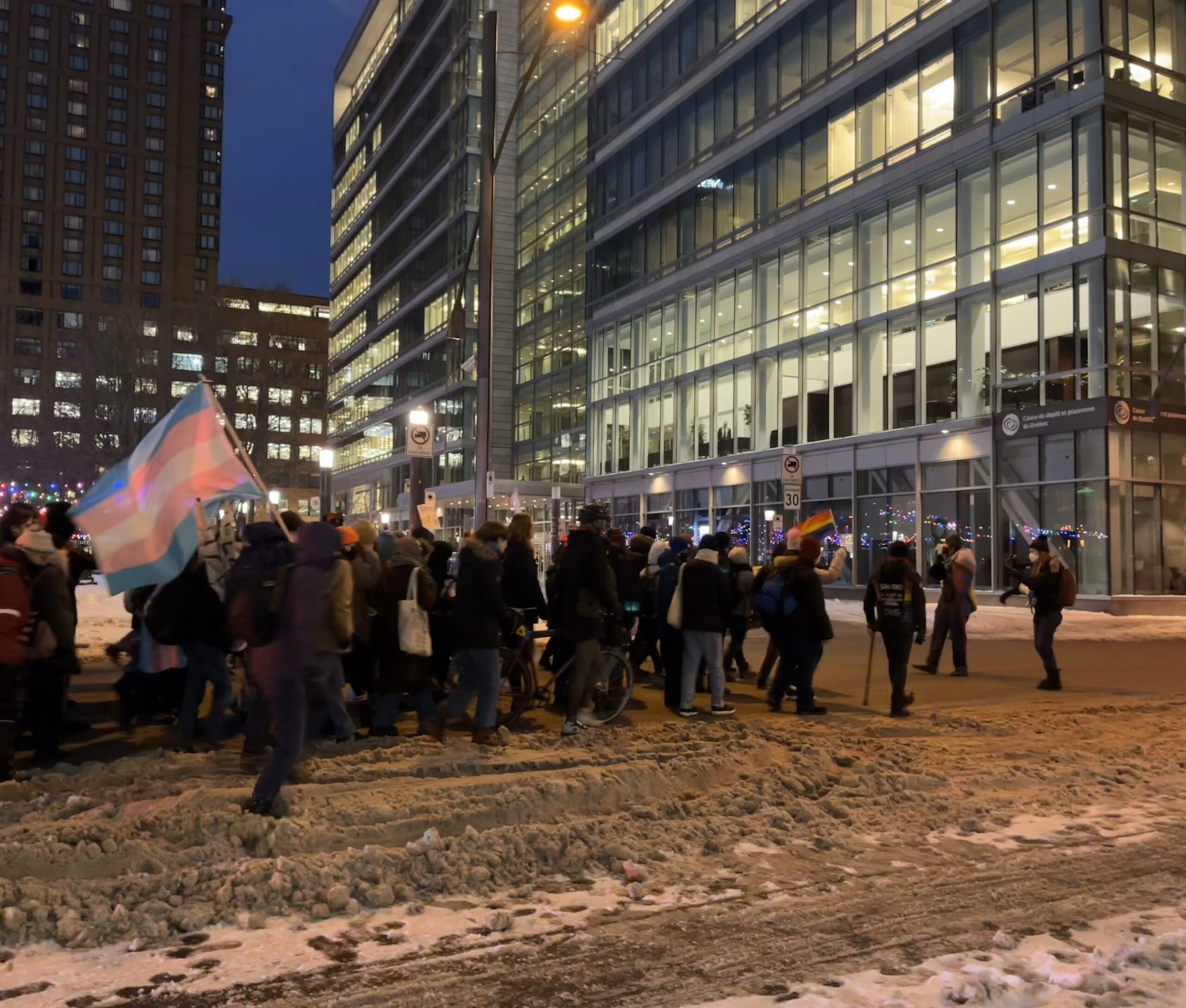Several queer organizations in Montreal came together to protest against anti-trans actions by the current Quebec government.
At 4 p.m. on Jan. 15, about 50 people gathered in front of Montreal’s Palais de justice in the Old Port. Co-organized by Mubaadarat, Com (CUMSLUTS) UQÀM, Première Ligne, P!nk Bloc and Queer McGill, this protest comes as a response to recent decisions made by the Coalition Avenir Québec (CAQ).
On Dec. 5, Quebec’s Minister of Families, Suzanne Roy, announced the creation of a “comité des sages” or “committee of wise people” to guide the province in legislation concerning trans people. Though one of the three goals of this committee was to “ease social tensions,” many trans and queer people have expressed concern about the implementation of the committee.
“[Their] job is essentially to debate ‘the trans question’ in a way that really is debating whether or not we are allowed to exist and how they presume how to let us integrate into society,” said protest coordinator Ki’ra, who preferred not to share their last name. “Conservative governments are generally not very queer-friendly, but this [government] particularly has taken several steps to alienate queer people in an attempt to garner more support.”
Much of these criticisms come from the absence of trans people or allies within the committee.
Celeste Trianon, one of the protest’s co-organizers, chimed in: “It’s a committee that’s going to make so many decisions about the future of queer and trans rights in Quebec, yet does not contain any trans people, concerned people such as parents of trans people, nor experts.”
Speeches began shortly after the crowd gathered, with various organizers speaking in English and French about the CAQ’s policies, why they were harmful, and what they hoped would be done moving forward. “This committee is François Legault’s response to [the anti-trans protest on] Sept. 20,” Ki’ra said. “If [the committee members] cared about trans people, they would resign from the committee and call for its dissolution.”
The implementation of the committee was not the only criticism made about the CAQ at the protest. “F*** the CAQ, everyone has a good reason to hate the CAQ,” said Ki’ra. “It’s been months that we’ve seen rotating strikes going on in the public sector. They don’t have any solutions for that, they don’t have any solutions for housing, they’ve recently put through a law that would allow landlords to refuse lease transfers without any reason.”
After the speeches concluded around 4:45 p.m, the group of protesters, now closer to 100, began marching north towards the Palais des congrès and Place D’Armes metro station. They continued chants such as “Tout le monde déteste François Legault” [Everyone hates François Legault], “When trans rights are under attack what do we do? Stand up fight back,” and “Contre Legault et la CAQ, queers bash back” [“against Legault and the CAQ, queers bash back”].
“I want to be part of the protest, to be part of the change,” said protestor Coralie Chouqette. “What’s happening everywhere in the world is unacceptable, but we have to start somewhere.”
Protesters then arrived at the Palais des congrès, marching through the doors near the Place D’Armes metro station. Chanting “on avance, on avance, on recule pas” [“we move forward, we move forward, we don’t move back”], protesters marched through the convention center.
Though mall security tried to stop the protestors and redirect them through the first exit toward the parking lot, the protesters persisted. Refusing to divert from their planned course, there was a brief stand-off between some mall security officers and those at the front of the protest. The protesters continued down the center, chanting “hey hey, ho ho, François Legault has got to go.” The protesters then left the complex, marching down René-Lévesque Blvd. Chanting continued, with “dans la rue avec nous” [on the road with us].
After marching down René-Lévesque Blvd, police positioned their bikes in a diagonal line in an attempt to redirect protesters toward the other half of the road. The protesters persisted, chanting “get a real job” as they pushed through their attempted diversion, forcing police to further reroute traffic.
Throughout their march, organizers and coordinators offered informational flyers about why the queer community was marching against the CAQ to those they passed.
The group continued marching towards Place Victoria, arriving at the square around 5:30 p.m.. Shortly after, final remarks were made and the group of protestors disbanded.
